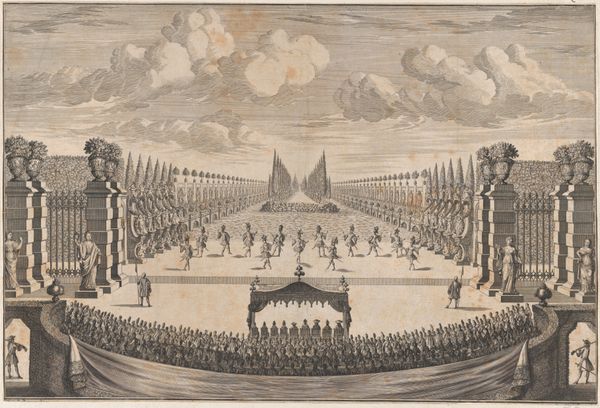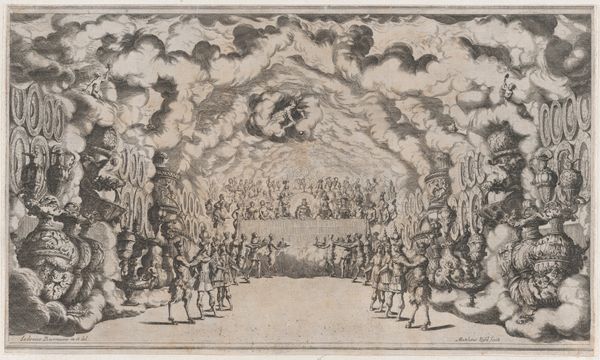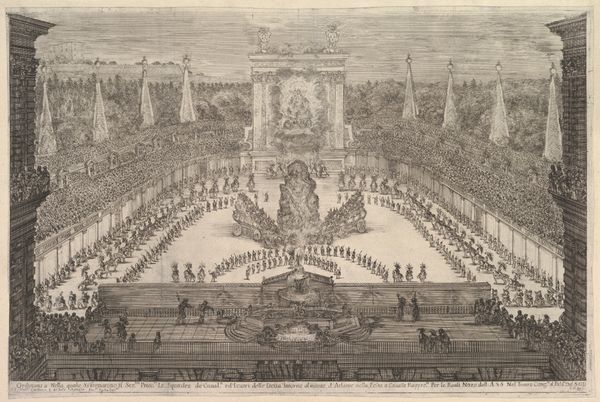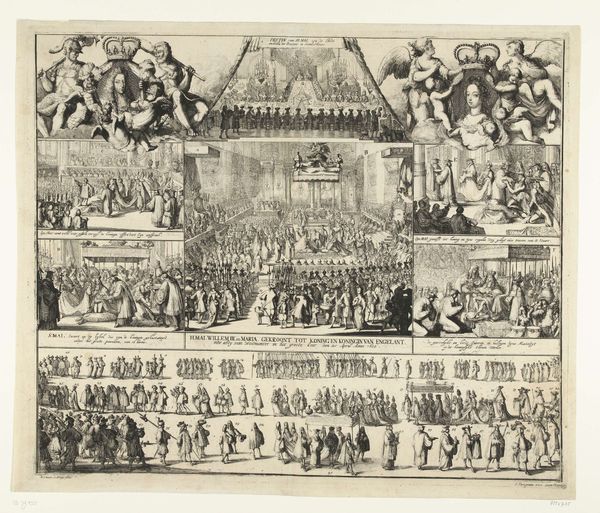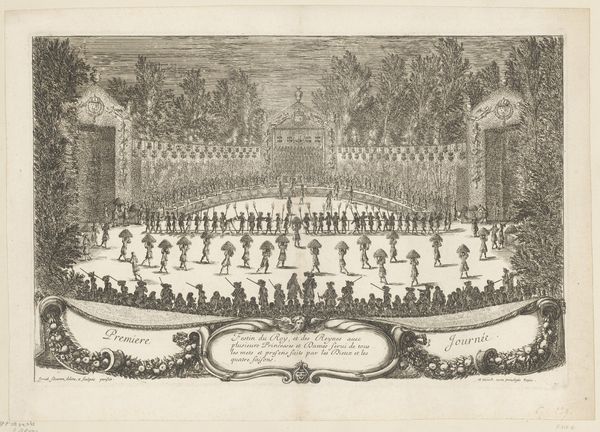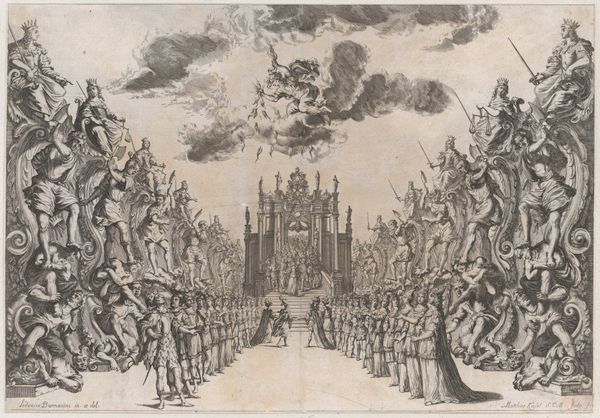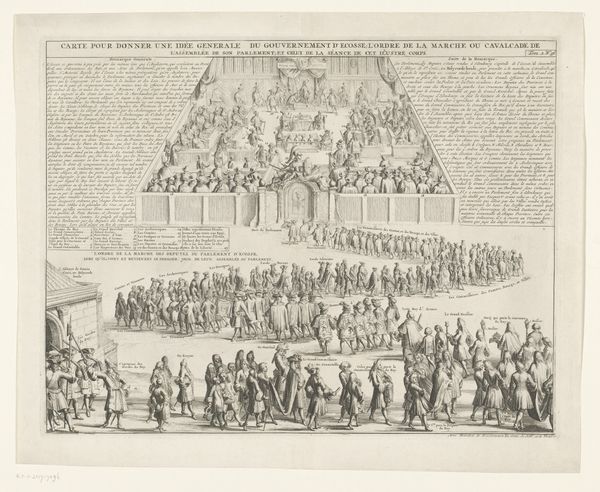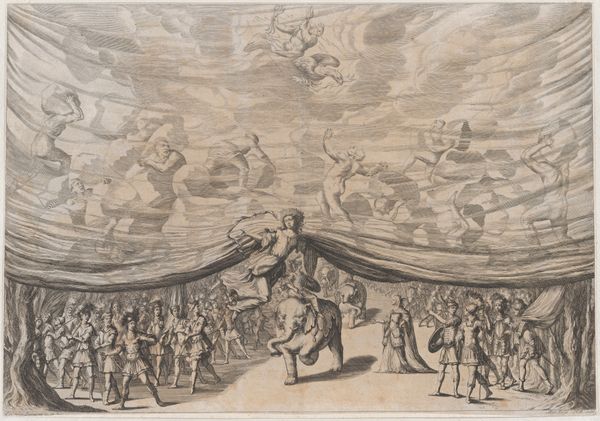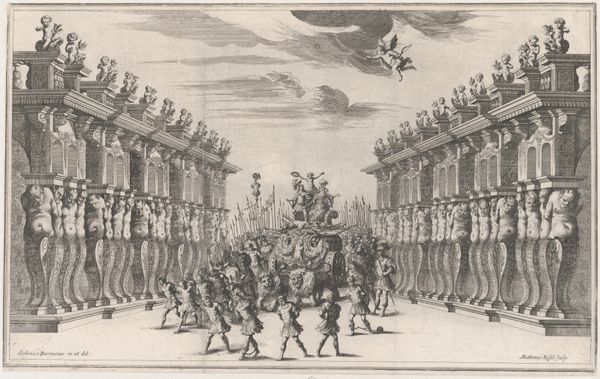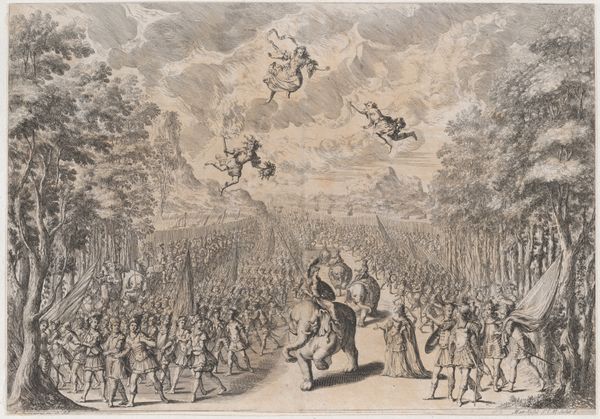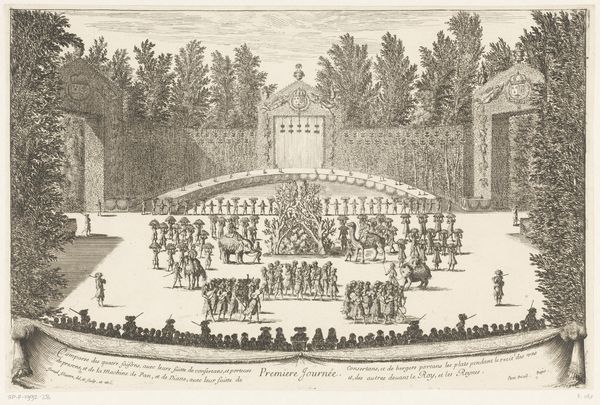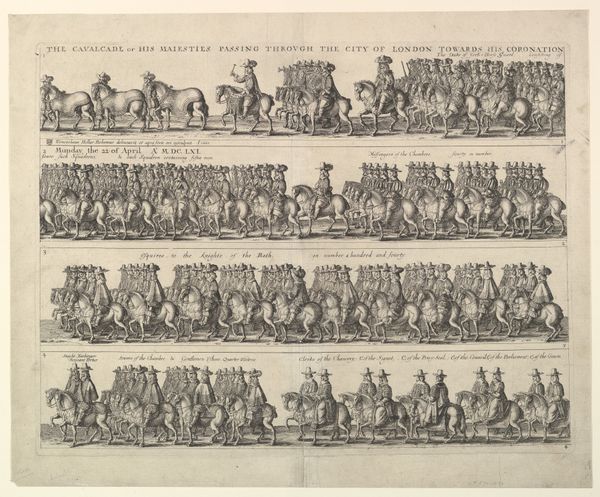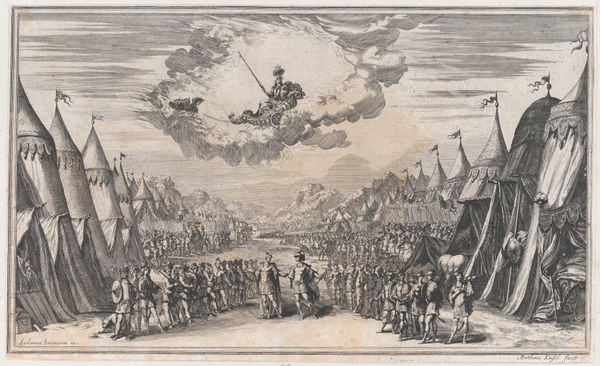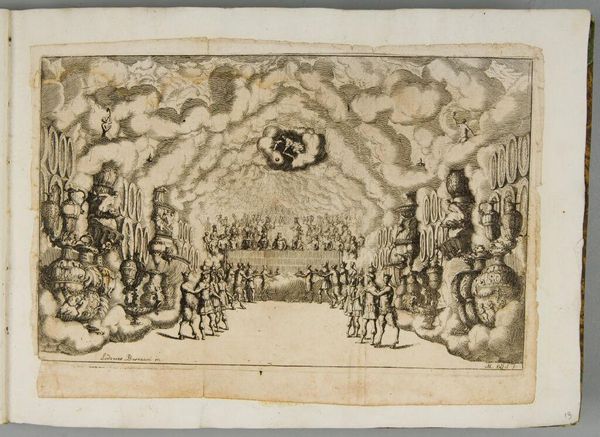
The royal family sitting under a canopy, watching dancers perform the opening ballet of 'La Costanza d'Ulisse' 1695 - 1705
0:00
0:00
drawing, print, engraving
#
portrait
#
drawing
#
medieval
#
baroque
# print
#
human-figures
#
landscape
#
figuration
#
history-painting
#
engraving
Dimensions: Sheet (Trimmed): 12 5/8 × 18 1/2 in. (32 × 47 cm)
Copyright: Public Domain
Editor: So, here we have Johann Ulrich Kraus's "The royal family sitting under a canopy, watching dancers perform the opening ballet of 'La Costanza d'Ulisse'", likely created between 1695 and 1705. It appears to be an engraving or print. I’m struck by how it blends a staged theatrical performance with what seems like a formal royal occasion. How does this image reflect the relationship between art and power at that time? Curator: It's fascinating, isn't it? This engraving offers a glimpse into the highly structured social world of the late 17th and early 18th centuries. Consider how theatrical performances like the ballet were often elaborate displays of power and wealth. The royal family isn’t simply watching entertainment; they’re *being* watched, their presence legitimizing and solidifying the performance and, by extension, their own authority. Who do you think the target audience for this engraving was, and what message was it intended to convey? Editor: I imagine this print circulated among the upper classes, perhaps as a souvenir or a form of social currency. It seems designed to reinforce the grandeur of the monarchy and the importance of courtly spectacle. Curator: Exactly. Notice the architecture framing the stage, seemingly blending into a garden setting. These deliberate constructions—both the performance and the setting—underline the power to shape reality itself. And the depiction of violence on stage, with dancers wielding weapons, tells you something about the Baroque aesthetic’s appreciation of dynamism and strong emotion but also the violence underpinning so much power. This also illustrates the role of art in promoting ideals but perhaps simultaneously hinting at certain tensions. The ruling classes sought legitimacy but were they fully believed? Editor: I hadn't considered the subtle undertones. It's more than just a simple documentation of an event; it’s a carefully constructed narrative. Thanks for making me think beyond the surface. Curator: And thank you for making me consider who was allowed and able to access such events at the time! It really underscores the role of these visuals within a rigid class hierarchy.
Comments
No comments
Be the first to comment and join the conversation on the ultimate creative platform.
